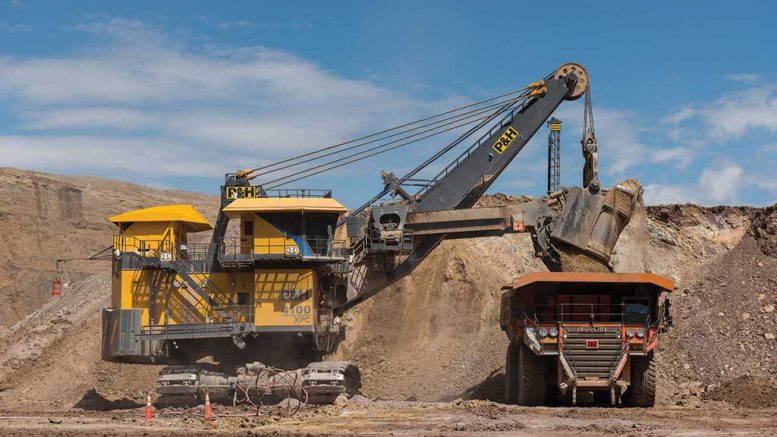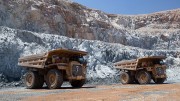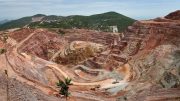The total transaction value of mergers and acquisitions in the second quarter of the year reached US$2.86 billion in twelve deals, with Chinese buyers acquiring gold assets and smaller companies joining forces to become mid-tier producers, Bank of America Securities says in a new report.
The investment bank notes that the 12 transactions represented the highest quarterly total since the fourth quarter of 2012, and the dollar value was nearly double that seen in M&A deals during the first quarter of 2020.
It also pointed out that one of the trends in the second quarter was the preference for assets already in production or nearly in production. “Six of the twelve transactions in Q2’20 were for assets currently in production,” the report states.
Describing the current investment climate as a “buyer’s market for companies,” BofA notes that five of the transactions with reserves that took place in the second quarter of the year “were priced at a 23% discount to the prevailing gold price, below the historical range of -20% to +10%.”
“The data indicates that H1’20 was one of the best periods to be a buyer of gold companies, mines and projects,” the bank concludes. “For gold company transactions, acquisition prices, relative to the prevailing gold price, were on average at the lowest level since 2011 and the second-lowest since 1998.”
The bank also points out that “megaprojects are back in vogue,” citing Artemis Gold’s $190 million cash acquisition of New Gold’s Blackwater project in British Columbia, one of the largest open-pit gold deposits in Canada, which has “added over US$200 million of new market value” to the buyer. “This may put the spotlight back on companies sitting on multi-million oz. low-grade gold megaprojects.”
In addition, of the 12 deals in the second quarter, seven had reserves and five had resources-only. “The ‘elephant in the room’ was SSR Mining’s friendly US$1.71 billion all-share merger with Alacer Gold on May 11, 2020,” it states, which has created a +600,000 oz. gold producer. “The remaining eleven transactions ranged in size from US$27 million to US$238 million. The global senior producers were absent from the M&A circus in Q2’20.”
Moreover, only half of the Q2 transactions were in mining-friendly jurisdictions (Canada, Australia and Ghana), illustrating that “political stability [was] less important in Q2’20.”
The M&A deal flow is unlikely to slow in the second half of the year, the bank forecasts, with higher gold prices and the need to replenish reserves.

Pretium Resources’ Brucejack gold mine in northwest British Columbia’s Golden Triangle region. Credit: Pretium Resources.
“For the H2 2020, the need to replace reserves mined in 2020 plus the higher gold price will be catalysts to drive further M&A,” BofA comments in its July 9 report. “After years of underinvestment, we see production profiles under pressure and reserves in decline. The evidence is too obvious to ignore … At year-end 2019 total gold reserves for the global gold producers amounted to 612 million oz., down 30% from the peak of 875 million oz. at year-end 2012, equating to declining reserve life indexes.”
It predicts that with gold cresting US$1,750 per oz., the result will be “windfall free cash flows and expanding valuation multiples” that will look a lot like the period of record M&A between 2010 and 2013. Mid-tier producers that don’t do deals, it reasons, “risk being ‘left behind’ by their rapidly growing peers.”
“An unintended consequence of non-core asset sales by senior gold producers (post the mega-mergers in late 2018-early 2019) has led to a burgeoning ‘senior’ mid-tier producer sector marked by gold output in the 1.0-1.75 million oz. range,” the report states. “These larger more liquid producers are coming to the attention of global gold investors (likely at the expense of the smaller mid-tier gold producers [0.5-1.0 million oz.].”
The bank lists eight companies that are mid-tier producers that have “intriguing” mines and or development projects: Pretium Resources, Victoria Gold, Torex Gold, Wesdome Gold Mines, New Gold, Lundin Gold, Teranga Gold and Perseus Mining.
On the exploration and development front, BofA says its list of companies with interesting assets contains: Gold Road Resources, Osisko Mining, Rubicon Minerals (now Battle North Gold), Great Bear Resources, Gold Standard, Orla Mining, Sabina Gold & Silver, Marathon Gold, Okio Resources, International Tower Hill, Novagold, INV Metals, Premier Gold, MAG Silver, Midas Gold, Algold Resources, Eastmain Resources, West African Resources, Belo Sun Mining, Artemis Gold and Sirios Resources.
One thing that might slow M&A down, BofA says, is the inability of companies to conduct site visits of potential acquisitions during the pandemic. As a result, “acquirers excelling at ‘desktop’ analysis of assets could find an ‘edge’ over their competitors.”






Be the first to comment on "Rising gold price and reserve depletion to drive M&A, Bank of America says"